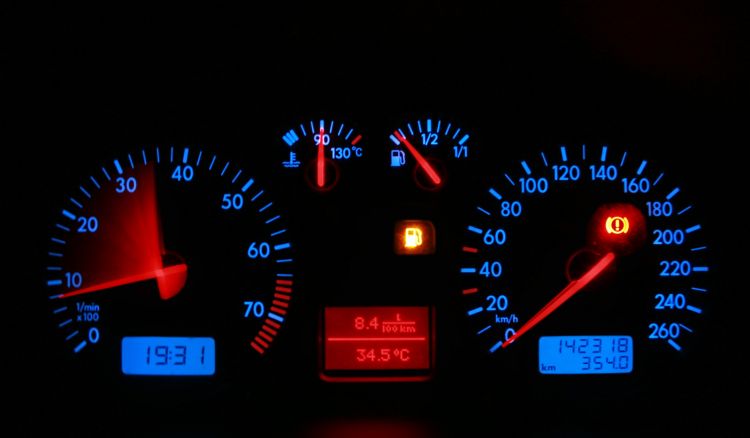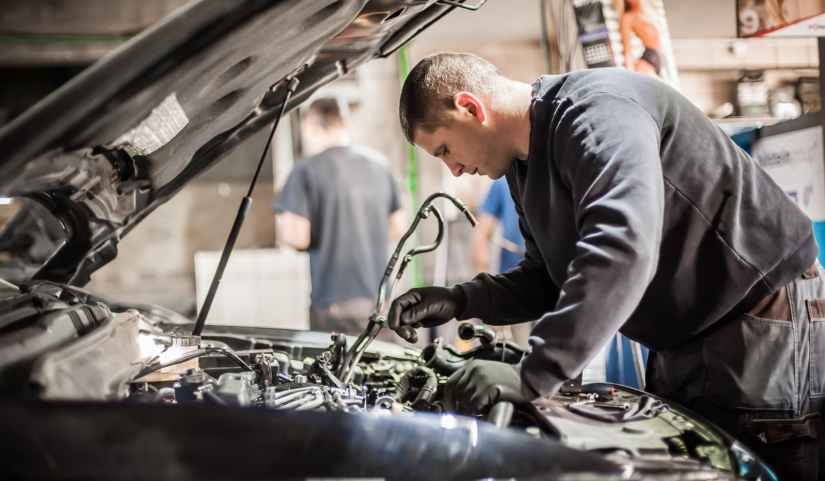Electric car batteries send power to a processor that runs the electric motor or motors in the car. The battery is like a machine that takes chemical energy and turns it into power. An electric battery contains cells that store electricity. Each cell has two half-cells that are known as electrodes. Electrons, which are tiny particles that are negatively charged, are held in one of these half-cells. The positive anode, which has no electrons, is the other half of the cell. The negative electrodes move to the positive side when the positive and negative electrodes joins. This flow is electricity.
You use the energy to power your EV’s electric motor. As the electrons keep moving, they slow down and the energy that the battery makes goes down. When the flow slows down enough that there are the same number of positive electrons on the positive side as there are on the negative side, the battery stops making electricity.
Luckily, Electric Car batteries can be charge again and again. When you plug in your car. Electric energy helps to flip the negative and positive halves of the cells which charges the cell again. Hey, you asked to read about how EV batteries work, right? I’m sorry if this sounds like a science class from high school.
Life Of An Electric Car Battery
If an EV battery stops being able to power a car. It can still power a house or building by adding to a battery storage device. A battery energy storage method saves battery power for later use.
It is possible to connect Electric Car Batteries to green energy sources like wind or solar power for your home. You can store it so that you can use it at night when there is less wind and light. Or even during the day with wind or sun power. This way of making energy can help you save money on your bills and use less electricity from the grid.
In an electric car, the battery is a tried-and-true part that will last for many years. In fact, companies that make EVs promise it. Nissan guarantees that the batteries in its electric cars will last for eight years or 100,000 miles, and Tesla does the same.
When the battery in your phone dies after only two years, this may seem strange, but it’s possible for it to be fully charged and drained hundreds of times during that time. It is said that each of these “charge cycles” shortens the battery’s life. A lithium-ion phone battery starts to lose a lot of its functionality after about 500 full cycles.
Manufacturers Role
Manufacturers of electric cars go to great lengths to make the Electric Car Batteries last longer. That might be fine for a phone, but not for a car that’s meant to go thousands of miles. In an EV, the batteries “buffer,” which means that drivers can’t use all of the power they store. This limits the number of rounds the battery can go through. This, along with other methods like smart cooling systems, means that batteries for electric cars should last for many years without any problems.
Makers of electric vehicles make sure that there is extra capacity in the battery to make up for the fact that it loses power over time. An older electric car’s battery cycles use up the additional space. And because of this, the car’s range stays the same over the life of the battery. When the battery’s capacity drops below 80%, users may notice that the battery’s range and power start to change.
Electric cars use three types of batteries – lead-acid, nickel metal hydride, and lithium-ion – for power today.
How Do Electric Car batteries get made?
Electric cars use lithium-ion batteries that can hold a lot of power and can be charged up with almost no energy loss. They use carbon or graphite, a metal powder, and lithium salt to make the batteries. The positive and negative electrodes consists of these elements, and ions are what make the electricity flow. After the battery’s useful life is over, it can be taken apart to use the parts again, and about 80% of the parts can be recycled.
The anode, cathode, separator, liquid, and lithium ions are the most important parts of a lithium-ion electric car battery. Approximately 17 pounds of lithium carbonate, 77 pounds of nickel, 44 pounds of manganese, and 30 pounds of cobalt are contained in each EV battery cell. Lithium is an important part of EV batteries, and demand for it is at an all-time high.
To find new materials, scientists need to know exactly where lithium is on the earth’s surface and how it is concentrated. This is a problem, according to the U.S. Department of Energy. The mining of cobalt, nickel, and lithium for these batteries has negative impacts on the Earth. One ton of lithium needs almost 500,000 gallons of water to be taken out of the ground.
Scientists are working on ways to get nickel and cobalt out of batteries right now. One more environmentally friendly way to get lithium is through Direct Lithium Extraction (DLE), which has been created by companies like Energy X. The lithium output is higher with this method, but it does so faster, cheaper, and with less water use.
Where do batteries for electric cars get made?
As the world rushes to make all-electric cars, most lithium-ion battery packs for them come from China. However, governments all over the world are securing their supply lines.
At the moment, the parts that go into these cells come from many different countries. The Democratic Republic of the Congo is home to half of the world’s cobalt. India, Australia, and Brazil are all places where you can find nickel. On the other hand, Chile, Bolivia, and Argentina are the countries in South America that mine 75% of the world’s lithium.
Cars and battery makers spend a lot of money on finding cheaper ways to produce things and developing new methods for recycling Electric Car Batteries. Instead of mining for new materials, the goal is to come up with ways to get valuable metals back from old batteries.
By switching EVs to solid-state batteries, automakers hope to get rid of the economic and environmental problems that come with mining and making lithium-ion batteries. These Electric Car Batteries are cheaper, lighter, and take less time to charge because they don’t use liquid chemicals to carry electricity. Instead, they use solid ceramic material. With solid-state batteries, you can drive more than 500 miles on a single charge, which cuts your carbon footprint by 40%. BMW and Ford are trying these batteries so that they can be used in cars in 2025.
Kinds Of Electric Car Batteries
All cars that run on fuel have lead-acid batteries that provide the electricity needed to turn on the engine and start the car. The lead-acid battery, created in 1859, was the first recharging battery still on the market. Batteries uses a mild sulfuric acid solution, making them famous as “wet cell batteries”. The name comes from the fact that acid and lead electrodes combines together to make energy. They helps to power extra features in EVs like the entertainment system or technology that helps the driver.
A small space of theirs is famous for packing a lot of energy. Nickel metal hydride batteries have been around since the 1980s. To put it another way, they’re very powerful for their size. They are easy to recover because they don’t have any dangerous metals in them. The active material in this case is nickel oxide-hydroxide, and the negative electrode contains metal that absorbs hydrogen. They last a lot longer than lead-acid batteries and are used in a lot of hybrid and plug-in hybrid cars.
EVs used lithium-ion batteries for the first time in the 1990s. They can store a lot of energy and keep it for a long time, which makes them perfect for running electric cars. Energy density is the amount of energy a battery can store compared to how much it weighs. A lithium-ion battery, on the other hand, has ten times the density of a lead-acid battery. Lithium-ion batteries make a lot of energy, are simple to charge, and last a very long time—often longer than the car itself.








